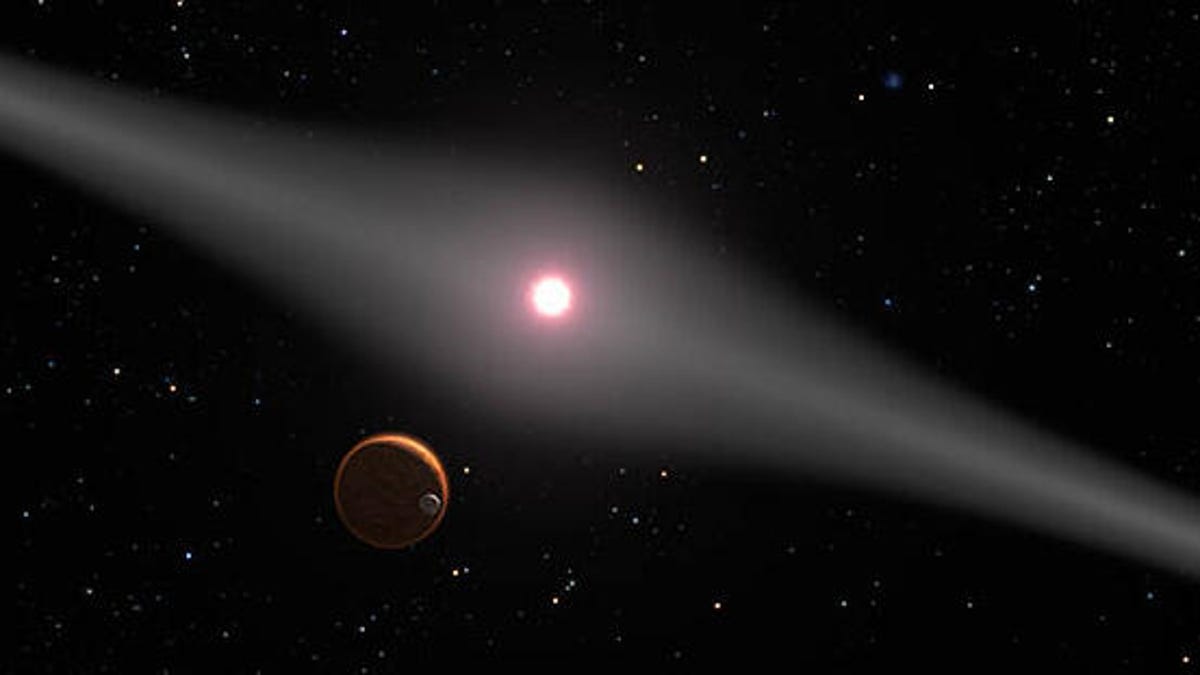NASA's planet-hunting probe just discovered a world hidden in a debris disk
The TESS telescope combines with Spitzer for a cosmic breakthrough over a decade in the making.

An artist's impression of a hypothetical planet around AU Microscopii.
For the last 15 years, astronomers have been hoping to find a hidden planet orbiting the young star AU Microscopii, a red dwarf about 32 light-years away. The small star is only an infant (in star terms) at around 20 million years old, and it's about half as massive as our sun. It's also surrounded by a dusty disk of debris. The debris disk has long complicated the search for a suspected planet, and the young star's magnetic field has also troubled planet hunters.
But now, thanks to the work of NASA's TESS telescope and its recently retired Spitzer space telescope, astronomers are reporting the detection of AU Mic b, the first exoplanet in the system.
In a study, published in the journal Nature on Wednesday, researchers detail their find: AU Mic b is up to 58 times as massive as the Earth and lives up real close and personal with AU Microscopii, completing an orbit every 8.5 days. Its discovery is a boon for planet hunters because the planet is so young, giving astronomers a chance to understand planetary formation processes, including those that shaped our own solar system, and how planets evolve over time.
To discover the planet, astronomers used data collected by TESS, NASA's Transiting Exoplanet Survey Satellite, which surveys huge sections of the sky for weeks at a time. It keeps an eye on thousands of stars and looks for periodic dips in a star's brightness, suggestive of a planet obscuring the star for a short time. Those changes in brightness can even explain the size of a planet and how quickly it orbits.
TESS detected two dips in brightness in 2018, and researchers turned to NASA's infrared Spitzer telescope in 2019 to confirm what they were seeing was indeed a planet. Previous data from the La Silla Observatory in Chile and the W. M. Keck Observatory in Hawaii helped confirm the result and resolve some of the planet's features.
AU Mic b is suspected to be a gaseous planet and may even be losing some of its atmosphere as it moves around its star.
"This star probably hasn't had time to form small, rocky planets yet," said Tom Barclay, a scientist at the University of Maryland Baltimore County, in a press release. "It gives us a chance to get a picture of what might have happened before our own terrestrial planets like Earth and Venus formed."
Researchers will continue to study the planet, hoping to better understand the composition of its atmosphere. Such insight could lead them back to an origin point for the planet within the debris disk and answer lingering questions about the early life of planets.

